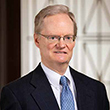The COVID-19 Pandemic and Inflation: Lessons from Major US Wars
Abstract
US fiscal and monetary policies implemented during the COVID-19 pandemic have been likened to those often adopted during wars. This article compares macroeconomic policies of the pandemic period with those of major US wars since the Civil War. Inflation often surges during wars, as it did in the second year of the pandemic, and the wartime experiences can provide insights about the relative scale and persistence of inflation associated with sudden, large increases in government expenditures, such as the fiscal response to the COVID-19 pandemic. The article describes fiscal and monetary policies in each war and postwar period and traces differences in the relationships between the growth in government debt, the money stock, and inflation across the episodes to differences in the prevailing monetary regime and other institutional arrangements. The evidence from US wars suggests that the extent of government spending and the means used to finance that spending can have a significant impact on inflation outcomes. Substantial monetary financing of large increases in government spending was a characteristic of most major wars and a key driver of inflation. Further, the historical record reveals that postwar periods can be disruptive, with sharp fluctuations in economic activity and inflation, and that quick restoration of price stability requires recalibration of fiscal and monetary policy that often has been politically and technically challenging.
"A simple way to think about what's happened is the pandemic was like a war, and you had war financing—lots of spending, not just in the U.S. but around the world. If we were going to err, we were going to err on the side of doing too much."
—James Bullard
Introduction
The substantial increase in inflation that the United States experienced in 2021-22 was a sharp break from the previous decade. Although this higher inflation is often attributed to supply disruptions, it followed large increases in federal government spending and debt and money stock growth that reflected the fiscal and monetary responses to the COVID-19 pandemic. These responses resembled in several respects the economic policy actions taken during major wars. Parallels between the 2020-21 episode and previous war-time periods are striking: Sharp increases in government spending and inflation have broadly characterized major wars and immediate postwar periods throughout US history. However, differences in how wartime spending was financed, existing monetary regimes, and the use of wage and price controls affected the timing and extent to which inflation followed from sudden large increases in government spending. Similarly, how fast inflation retreated when wars ended, if it did at all, reflected both institutional arrangements and economic policy choices.
This article compares and contrasts economic outcomes associated with the war on COVID-19 with major US wars since the Civil War: World Wars I and II, the Korean War, and the Vietnam War. Specifically, our intent is to glean insights about the relative scale and persistence of inflation associated with, and resulting from, wartime financing—that is, sudden, large increases in fiscal expenditures.
Citation
Kevin L. Kliesen and David C. Wheelock,
ldquoThe COVID-19 Pandemic and Inflation: Lessons from Major US Wars,rdquo
Federal Reserve Bank of St. Louis
Review,
Fourth Quarter 2023, pp. 234-60.
https://doi.org/10.20955/r.105.234-60
Editors in Chief
Michael Owyang and Juan Sanchez
This journal of scholarly research delves into monetary policy, macroeconomics, and more. Views expressed are not necessarily those of the St. Louis Fed or Federal Reserve System. View the full archive (pre-2018).
Email Us



